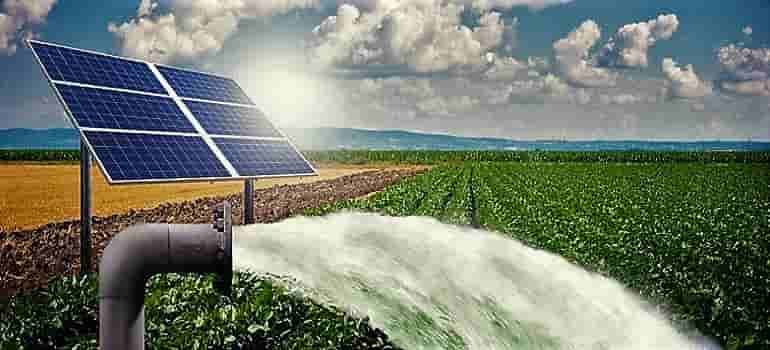 India can surpass the target of attaining 100 GW solar energy by 2022 provided it replaces all traditional water pumps by solar water pumps, said a study.
India can surpass the target of attaining 100 GW solar energy by 2022 provided it replaces all traditional water pumps by solar water pumps, said a study.
According to the report, these grid-connected, net metered solar water pumps will also play an important role in providing secondary income to farmers, while giving them access to quality power for irrigation.
The analysis was released at a conference hosted by Greenpeace India, GERMI, and IWMI-Tata Program to discuss necessary steps for successful implementation of KUSUM – a government scheme promoting solar irrigation pumps. At present, while the 60 GW target for large scale solar is on track, the 40 GW target for rooftop solar is still to gather momentum, with only 2.4 GW of total rooftop capacity installed as of March 2018, it said.
A preliminary assessment shows that replacing 100 per cent of all agricultural consumption in the next five years would require a total solar PV installed capacity of close to 150 GW.
This is far more than India’s solar target of 100 GW by 2022. Even achieving a modest 10 per cent of this potential in the next five years would translate to a very significant commissioned capacity of almost 15 GW, it added.
“Farmtops can revolutionise the way solar energy is deployed in the country. Issues that go with large solar parks such as land acquisition, setting up expensive transmission infrastructure, transmission losses and a host of other hassles can be avoided.
“The KUSUM scheme is timely and the Centre must work with all states to come out with a standard operating procedure (SOP) to facilitate smooth implementation,” said GERMI’s Akhilesh Magal.
The analysis also found that Maharashtra has the highest farmtop solar potential with 21.1 GW, followed by Karnataka (18 GW), Rajasthan (17.5 GW), Madhya Pradesh (14.9 GW), Gujarat (12.5GW), Uttar Pradesh (10.8 GW) and Telangana (10.4 GW).
Finance Minister had mentioned the KUSUM scheme in Budget 2018-19.
Source: PTI


